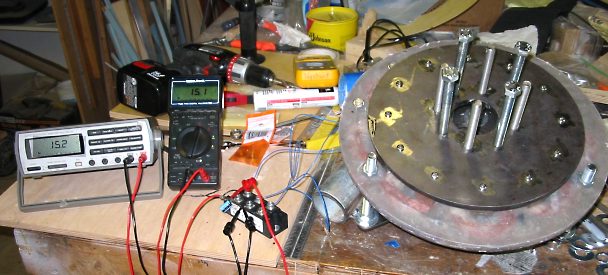I'm slowly working on my first mill. Some advice given when I started it was to build the alternator first because it would be easier to match blades to it rather than the other way around... Okay, I've got the alternator put together and I got my two best DVMs out the measure volts and hertz so I could figure out cut-in RPMs.
When I had them both in hertz, the agreed. I put them into AC, they didn't... (They profess "true RMS".) Call the meters "A" and "B"
Hz A B
- 9.6 8.8
- 12.2 11.3
- 14.7 13.4
I also got a third meter and read higher than A or B but it didn't claim to be a true RMS meter. I stuck all three into an AC socket and got 120, 117, and 120 volts from A, B and C respectively. A and B differ by 2.5% on the mains but by 10% on the mill. C was accurate on a pure sine wave; makes we wonder what kind of wave my mill is making...
I hooked up a 3-phase rectifier and a 470uF cap. A and B now agree to within a tenth of a volt, better than .1% ... seems like I ought to be able to convert the DC back to RMS but I'm a little fuzzy on the details. Here's a picture of the setup -

By using the hertz readout, I get
- Hz, 17.8v DC, (A&B RMS volts were 12.2v and 11.3v)
- Hz, 21.9v DC, (A&B RMS volts were 14.7v and 13.4v)
By watching the clock, I get 10.2v RMS, 15.5v DC at 120 RPM with meter A (it's a 12 pole alternator).
The voltage drop across plus and minus on the rectifier is .8v
I can't get the formulas to match up the numbers and I'm wondering if that since there's no load on the cap, that it's charging to a peak to peak value from the rectifier; should I be using a correspondingly lower value as my DC volts?
Besides wanting to know which meter is correct, I'd really like to know my cut-in RPM is for a 24 volt system... as always, I really appreciate the help!
- Ed.